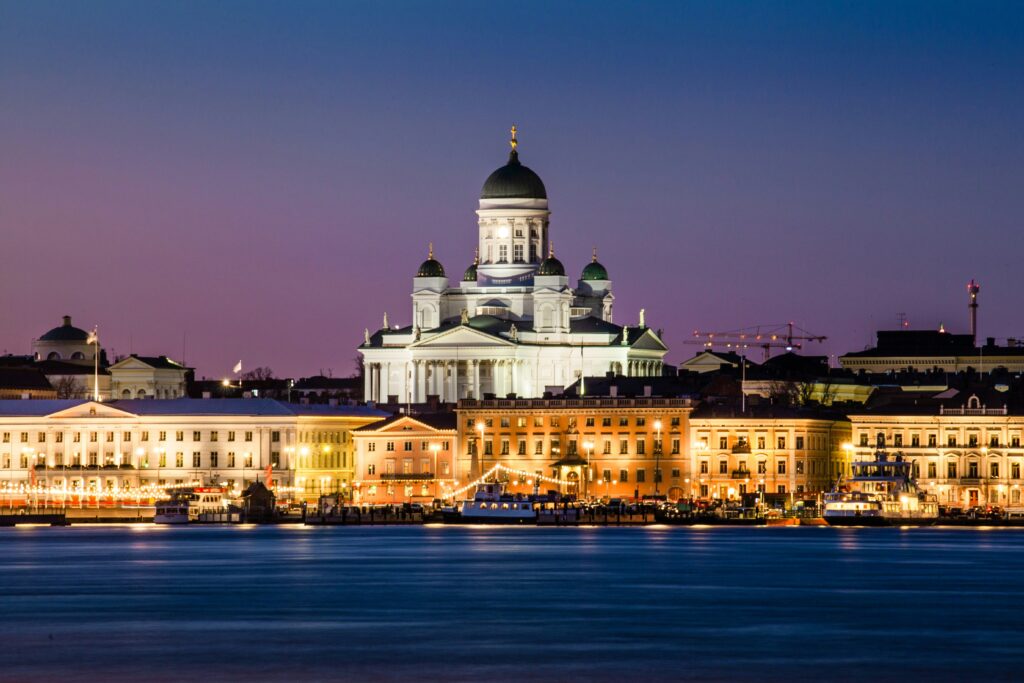
The best from the happiest country on the planet!
This five-day road trip kicks off in Helsinki and loops through the soul of southern and central Finland, weaving together UNESCO-listed fortresses, icy lakes, experimental design hubs, and the purest nature you’ll ever breathe. With just under 800 km of driving in total, the route is built for slow mornings, cold-water dips, outdoor adventures, and the kind of cozy dinners that only happen this far north. Think fire-cooked salmon, dark rye bread, and wild mushroom everything.
This one’s for the design-heads, the sauna-seekers, and anyone craving a deeper look at Finnish culture—outside the guidebook. PLUS a bonus trip north…
And don’t sleep on Finnish cuisine – read about all the things you must eat in our Cerca guide to Finnish flavors.
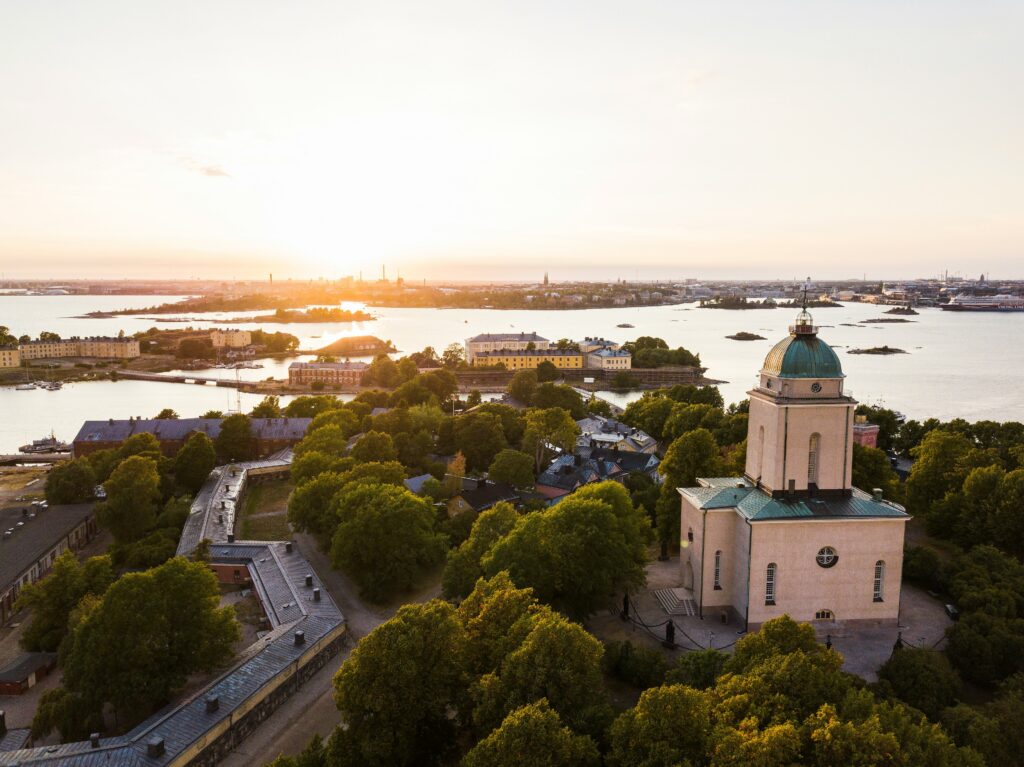
Day 1: Helsinki – Design, Tradition, and a Dip in the Baltic
Drive time: 0 km (Explore on foot)
Why Visit:
Finland’s capital is a sleek blend of Art Nouveau, minimalist modernism, and quirky subcultures. Start your morning in the Design District where more than 200 galleries, boutiques, and concept shops show off Finnish innovation. Stroll past Iittala, Marimekko, and smaller labels making wearable art out of recycled wool and linen.
Then make your way to Temppeliaukio Church—carved directly into granite—and the funky Oodi Library, a temple of modern architecture and public space. Don’t skip Löyly, a seaside design sauna where you can sweat with locals and then plunge straight into the Baltic.
Prepare for your road trip: listen to Passport’s episode on Helsinki and Finnish culture.

Eat:
Ravintola Nolla – Helsinki’s first zero-waste restaurant. Try the celeriac schnitzel, or the pike-perch with fermented rye. It’s hyperlocal, low-impact, and totally delicious.
Shop:
Lokal – A gallery-shop with curated Finnish ceramics, textiles, and natural skincare—all sourced from local artisans.
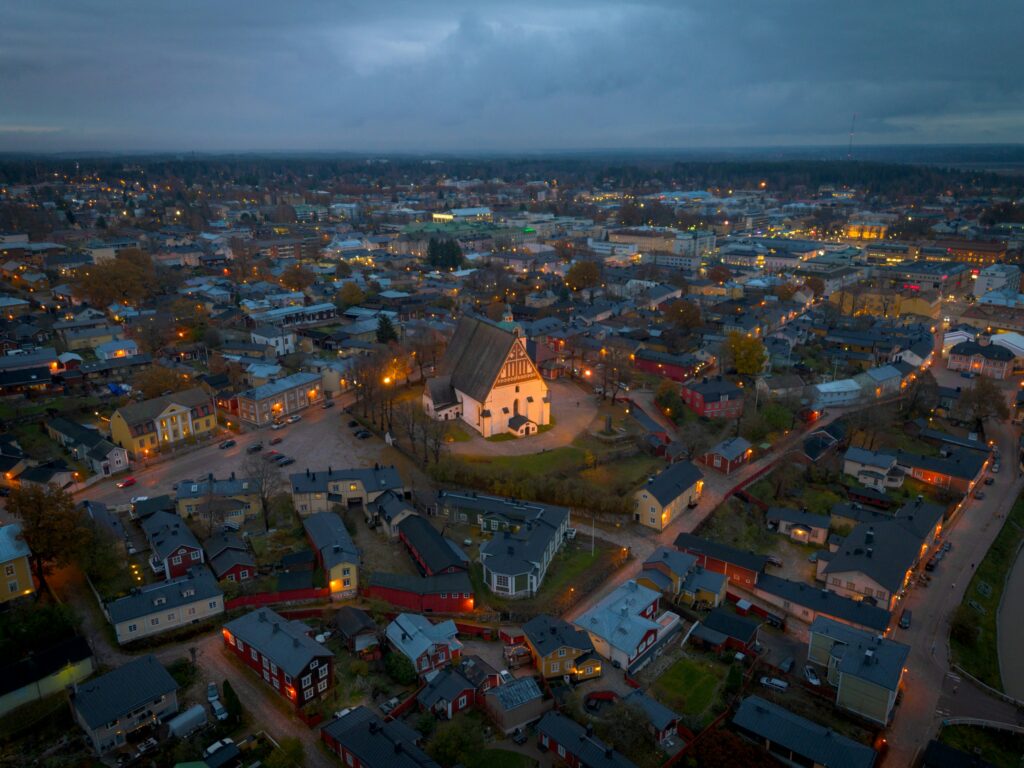
Day 2: Porvoo & Repovesi – Wooden Houses and Forest Silence
Drive distance: ~170 km
Drive time: 2.5 to 3 hours total (Helsinki → Porvoo = 50 min, Porvoo → Repovesi = ~2 hr)
Why Visit:
Start the day with a 1-hour drive east to Porvoo, one of Finland’s oldest towns. Its cobbled old town is straight out of a storybook, with pastel wooden houses, iron street lamps, and a slow-burn arts scene.
Porvoo first mentioned in historical records in the 14th century, though its roots stretch back even further as a riverside trading hub. Its location along the Porvoonjoki River made it a key site for commerce between the Finns and other Baltic cultures. In 1809, Porvoo gained national importance when it hosted the Diet of Porvoo, where Tsar Alexander I declared Finland an autonomous Grand Duchy within the Russian Empire—marking a pivotal step toward Finnish nationhood.
Culturally, Porvoo is a symbol of continuity and resilience. Its old town, with cobblestone streets and ochre-colored wooden houses, survived multiple fires and wars, becoming a romanticized image of “old Finland.” It’s also closely associated with national poet J.L. Runeberg, who helped shape Finnish identity in the 19th century. Today, Porvoo blends history and creativity, with a thriving arts scene rooted in centuries of tradition and renewal.
Pop into antique shops and try some handmade licorice before heading north to Repovesi National Park.
In Repovesi, it’s all about clean air and soul-level peace. You can canoe across glassy lakes, hike through pine forest trails, and cross the iconic Lapinsalmi suspension bridge. If you’ve never tried a firepit-cooked makkara (Finnish sausage) with mustard and rye beer in the woods—this is your moment.
Eat:
Zum Beispiel (Porvoo) – Inventive brunch spot with Finnish-Mexican fusions (don’t question it, just order the charcoal grilled rooster)
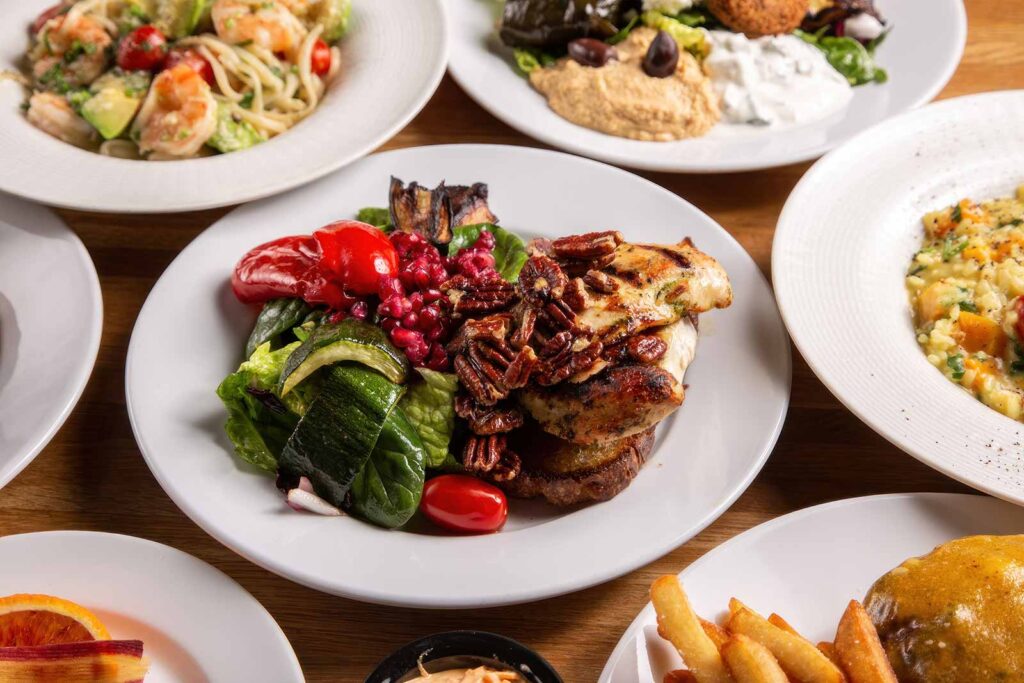
In Repovesi try campfire cooking. Pick up local sausages, rye bread, and cloudberry jam from a market in Kouvola on your way. Fire-ring picnic spots are built into the trails.
Experience:
Hike the 5 km Ketunlenkki Trail – includes the Lapinsalmi bridge, forest views, and a birds-eye lookout tower.

Day 3: Jyväskylä – Lakeside Sauna Culture and Alvar Aalto
Drive distance: ~245 km
Drive time: 3.5 hours (Repovesi → Jyväskylä)
Why Visit:
Drive north into the Lakeland region, where water and forest are everywhere and life moves to a different rhythm. Finland’s Lakeland region—Europe’s largest lake district—is a landscape shaped as much by ice as by culture. Formed during the last Ice Age, this vast web of lakes, islands, and forested ridges covers nearly half of Finland’s surface and has long been a lifeline for the people who call it home. The Saimaa Lake system, at its heart, has supported human settlement for thousands of years, from prehistoric hunter-gatherers to medieval traders navigating the waterways.
Culturally, Lakeland is seen as the soul of the Finnish countryside. Its rhythm—marked by birch trees, smoke saunas, and lakefront cabins—embodies the national values of simplicity, self-sufficiency, and closeness to nature. Many of Finland’s great artists, composers, and poets drew inspiration from this region’s quiet power. It’s also home to rare species like the Saimaa ringed seal and traditional livelihoods like tar-making and log floating, which remain celebrated parts of Finland’s cultural heritage.
Jyväskylä is a university town with serious design credentials—it’s home to the largest collection of works by legendary Finnish architect Alvar Aalto.
Stop by the Toivolan Vanha Piha, a 19th-century courtyard with artisan workshops, cafés, and a great little design store. Then, book a private smoke sauna on Lake Jyväsjärvi for a proper löyly (steam) session, complete with post-sauna lake plunges.
Eat:
Harmooni – A seasonal slow-food bistro in a restored 1920s harmonium factory. Go for the reindeer tartare or wild mushroom risotto.

Shop:
Toivolan Vanha Piha Boutiques – Located in a beautifully restored 19th-century courtyard right in the city center, Toivolan Vanha Piha isn’t just a charming historical site—it’s also home to several artisan-run boutiques. Here you’ll find handmade ceramics, woven textiles, Finnish wool garments, and unique souvenirs crafted by local artists and designers. Each little shop feels personal, and many of the craftspeople are on site and happy to chat about their work. It’s the perfect place to find gifts or pieces that reflect Central Finland’s folk craft heritage with a modern touch.
Bonus: There’s also a cozy café and a small museum on-site if you want to make it a longer stop.
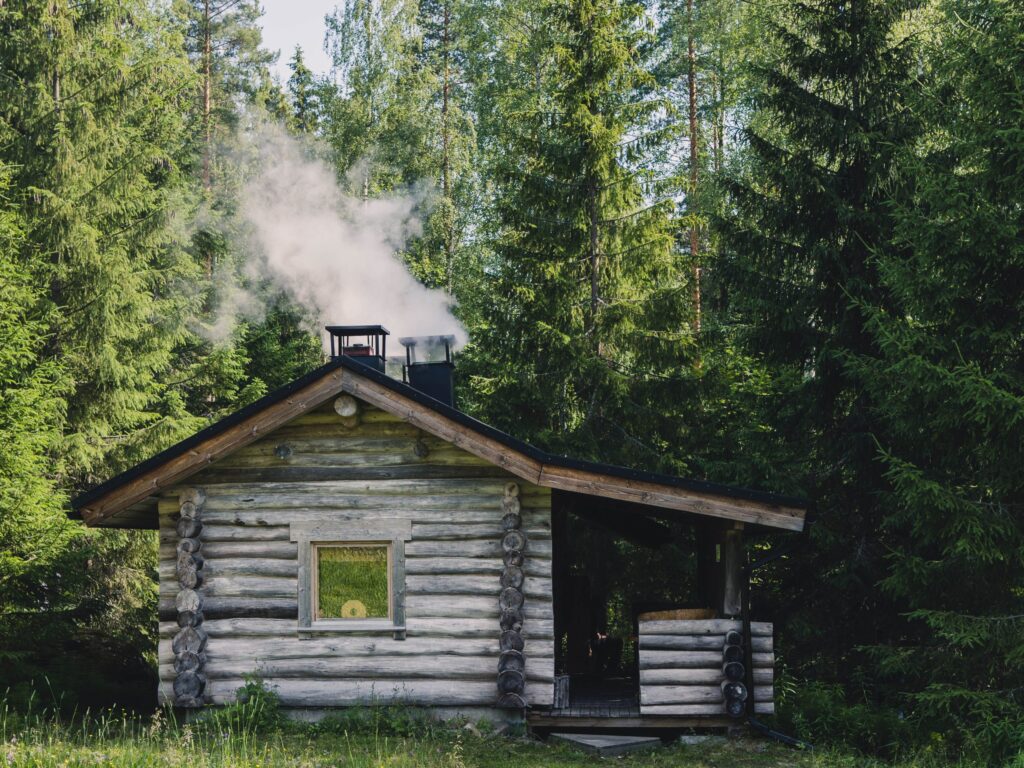
Day 4: Petäjävesi & Keuruu – UNESCO Churches and Floating Saunas
Drive distance: ~100 km
Drive time: 1.5 hours total (Jyväskylä → Petäjävesi = 40 min, Petäjävesi → Keuruu = 40 min)
Why Visit:
Start the day at the Petäjävesi Old Church, a UNESCO World Heritage Site built entirely of wood in the 18th century by local farmers. It’s quiet, austere, and stunning in its simplicity—a glimpse into the spiritual heart of rural Finland.
Built between 1763 and 1765 by local farmer-architect Jaakko Leppänen using only hand tools and pine logs, the Petäjävesi Old Church blends Renaissance and Gothic influences with traditional Finnish log construction. Its unique design reflects the ingenuity of rural communities who adapted limited resources into lasting works of sacred art.
The church wasn’t just a place of worship—it was a community hub for generations of villagers, and it remains deeply symbolic of Finnish Lutheran identity and rural resilience. Beyond the church, Petäjävesi maintains a strong connection to traditional crafts, small-scale farming, and forest-based culture. Annual festivals and local initiatives preserve its intangible heritage, making it a living example of how architectural, cultural, and natural heritage converge in Finland’s heartland.
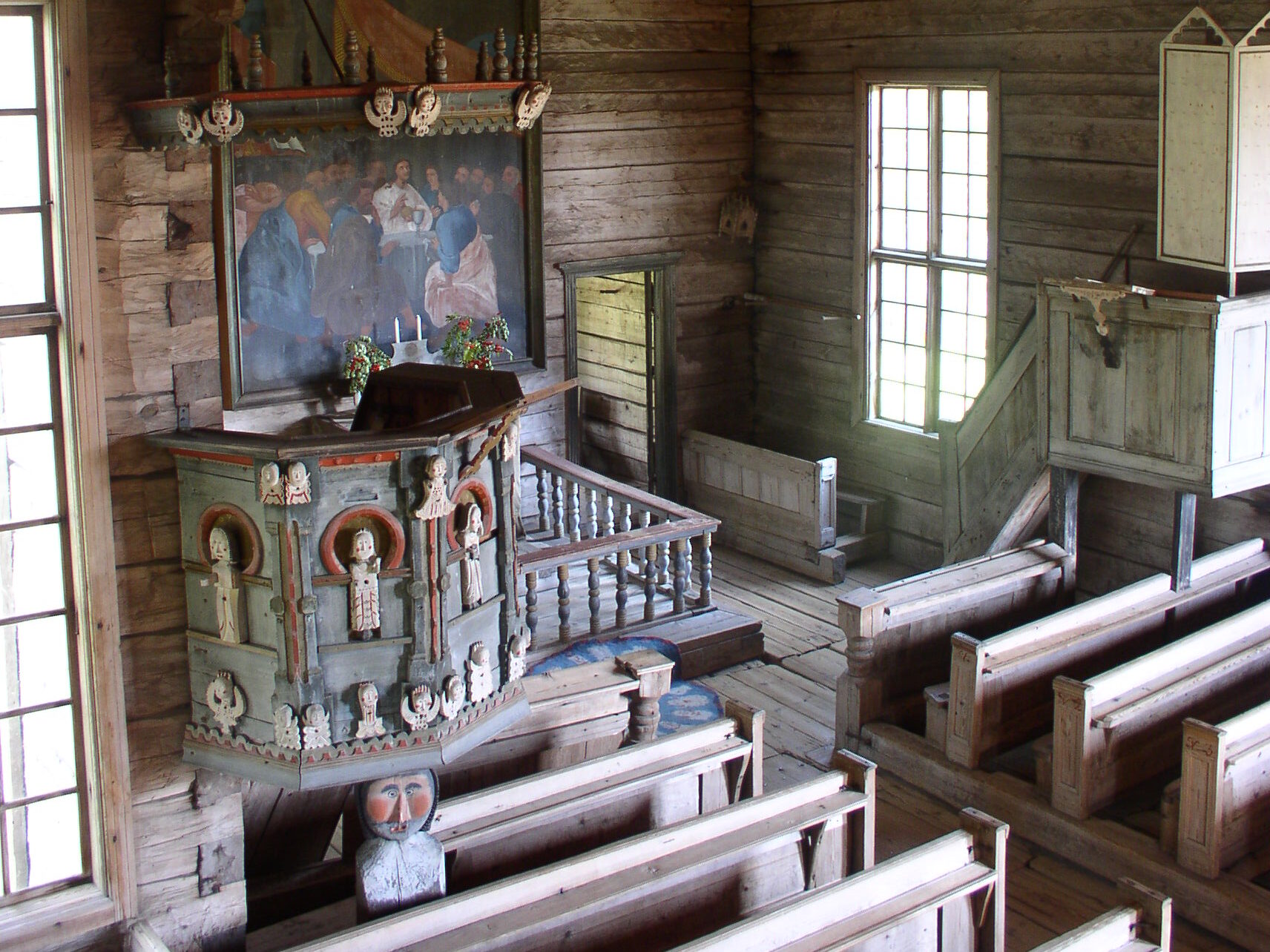
Then cruise through lake country toward Keuruu, where you can rent a floating sauna or paddleboard out onto still waters ringed by forest. In summer, wild blueberries and chanterelles line the trails—just bring a basket and check with the locals who can usually show you what’s edible.
Eat:
Pappilan Pidot (Keuruu) – Family-run restaurant in an old clergy house. Try the wild game stew and lingonberry pie.
Experience:
Rent a floating sauna on Lake Keurusselkä – it’s part steam bath, part sightseeing tour, all quintessentially Finnish.

Day 5: Fiskars Village – Design, Blacksmiths, and Artisan Vibes
Drive distance: ~275 km
Drive time: 3.5 to 4 hours (Keuruu → Fiskars)
After Fiskars, you can drive back to Helsinki:
Distance: ~90 km
Drive time: ~1.5 hours to Fiskars
Why Visit:
Before heading back to Helsinki, loop down through western Uusimaa to visit Fiskars Village, a former ironworks-turned-artist-community nestled in deep forest. This is where the iconic orange-handled Fiskars scissors were born—but now it’s filled with independent designers, glassblowers, weavers, and slow-fashion makers.
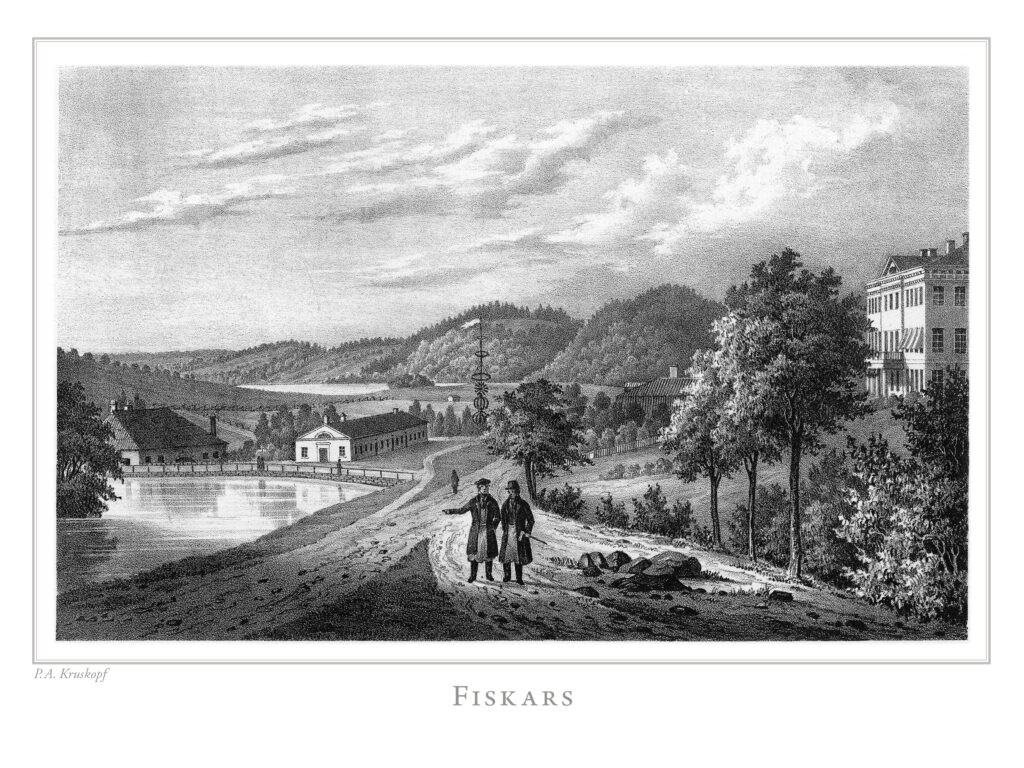
Uusimaa is Finland’s most urbanized and internationally connected region, home to the capital Helsinki and a dynamic mix of old coastal towns, design-forward suburbs, and Nordic nature escapes. Its culture reflects centuries of Swedish-Finnish coexistence, Russian influence, and modern Scandinavian innovation. Here, seaside saunas coexist with Michelin-starred restaurants, and medieval churches sit alongside Brutalist libraries. Uusimaa is where traditional crafts meet high fashion, and bilingualism (Finnish and Swedish) is a living part of everyday life.
Fiskars Village is ridiculously charming, and a great place to grab a last coffee and gift before heading back to the city. Bonus: the seasonal art exhibitions and design festivals here are genuinely world-class.
Eat:
Kuparipaja (The Copper Smithy Restaurant)
Address: Fiskarsintie 342, Fiskars Village
Set in a beautifully restored 19th-century industrial building right on the river, Kuparipaja is a local favorite that blends rustic charm with refined Finnish flavors. The menu focuses on seasonal, locally sourced ingredients—expect dishes like wild mushroom soup with rye crisps, Arctic char with dill butter, or a slow-cooked elk stew in colder months. The setting alone—exposed brick walls, tall windows, and an open view of the river—is worth the stop.
It’s one of the few year-round dining spots in Fiskars and makes a perfect lunch or early dinner stop after browsing the artisan boutiques. They also do excellent desserts (try the buckthorn sorbet or lingonberry tart), and have a small but thoughtful wine and craft beer list.
Shop:
Fiskars Shop & Onoma Gallery – One part design museum, one part concept store. Pottery, wooden toys, wool throws—made on-site by resident artists.
Absolutely—here’s how you could integrate Option 1 as a Bonus Day in the blog, staying true to the tone and format of the original post while honoring the cultural weight of Sámi heritage:

Bonus Day(s): North to Inari – Sámi Culture and the Arctic Spirit
Drive distance: ~850 km from Fiskars to Inari (consider flying to Ivalo + rental)
Drive time: ~11–12 hours (or 1.5-hour flight to Ivalo + 45 min drive)
Why Visit:
If you’re ready to go beyond the usual and into the deeply rooted heart of Finland’s Indigenous culture, Inari is the place to do it. This small town north of the Arctic Circle is the cultural capital of Finland’s Sámi people, the only recognized Indigenous population in the European Union. Their presence here stretches back thousands of years, long before national borders were drawn.
Begin at the Siida Museum, a beautifully curated complex that shares Sámi history, art, and seasonal life in the Arctic through immersive exhibits, language preservation efforts, and outdoor heritage trails. You’ll leave with a deeper understanding of Sámi struggles and resilience—and how traditional livelihoods like reindeer herding and handicrafts continue to shape this northern world.
Eat:
Aanaar Restaurant (Hotel Kultahovi) – One of the best fine dining experiences in Lapland. Try the reindeer with spruce needle oil or the Arctic char smoked over alder.
Experience:
Visit a local Sámi artisan cooperative for handcrafted silver jewelry or gákti (traditional dress). Ask questions, listen deeply, and buy directly—your support helps preserve both culture and autonomy.
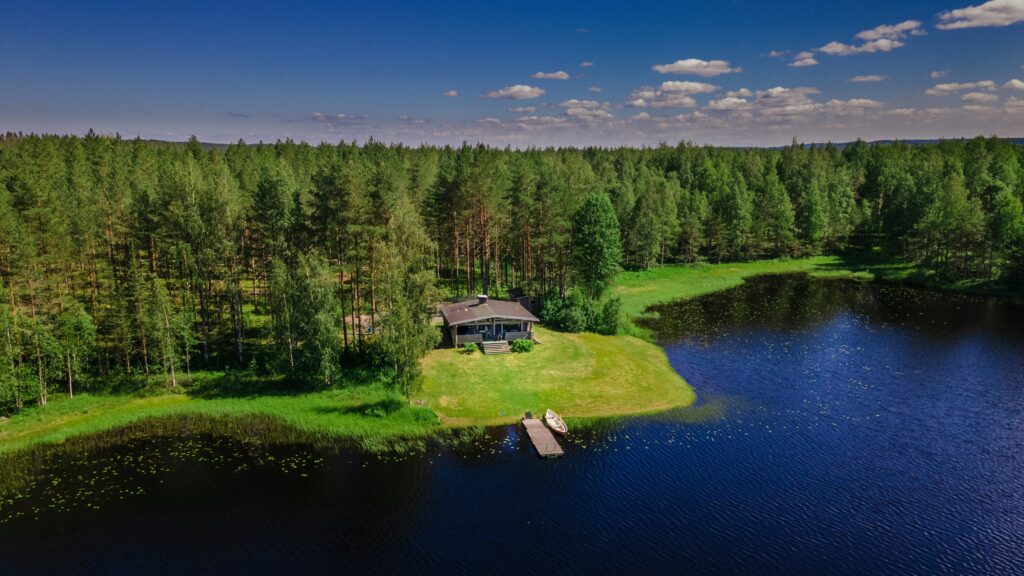
Final Notes
Car Rental Tip:
Start and end in Helsinki, with free parking in most rural areas. Use an EV if possible—Finland’s charging network is solid, especially around major towns.
Packing Tip:
Layers are everything—even summer nights can dip. Bring trail shoes, a swimsuit for sauna dips, and a reusable water bottle. Finland’s tap water is the cleanest in the world.
Travel Ethos:
Support small artisans and food producers—they’re keeping Finnish cultural heritage alive. Look for “Avainlippu” (Key Flag) symbols in shops, which mark Finnish-made products. And always clean up after yourself in the forest—it’s a cultural expectation.
Sustainable Tip:
Stay at eco-lodges or farm stays when possible (check for Green Key certification). Use public saunas rather than private hotel ones to conserve energy, and buy forest-foraged snacks and goods—they’re part of Finland’s deeply rooted circular economy.
For more curated road trip ideas, Nordic nature escapes, and where to eat reindeer, check out more at Cerca.